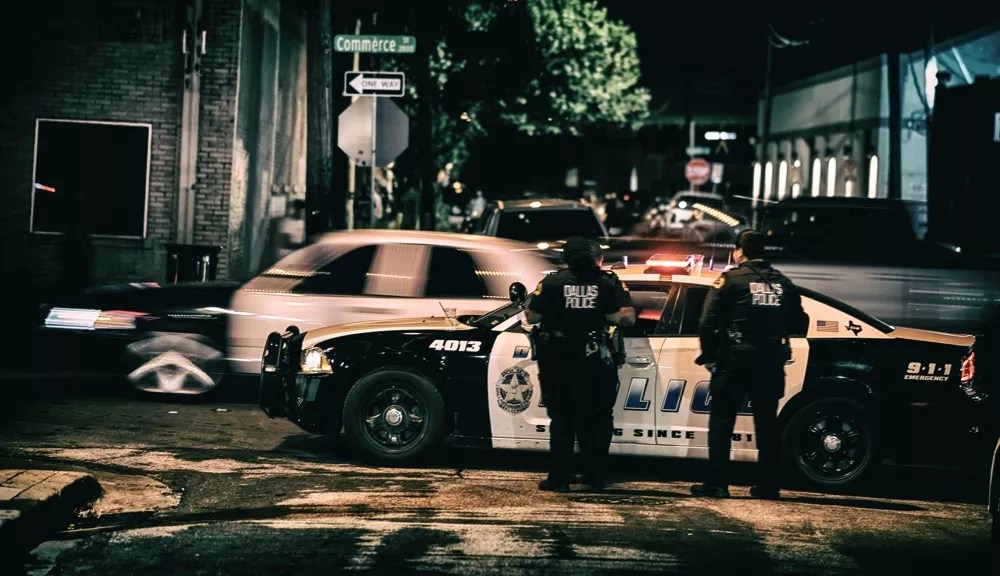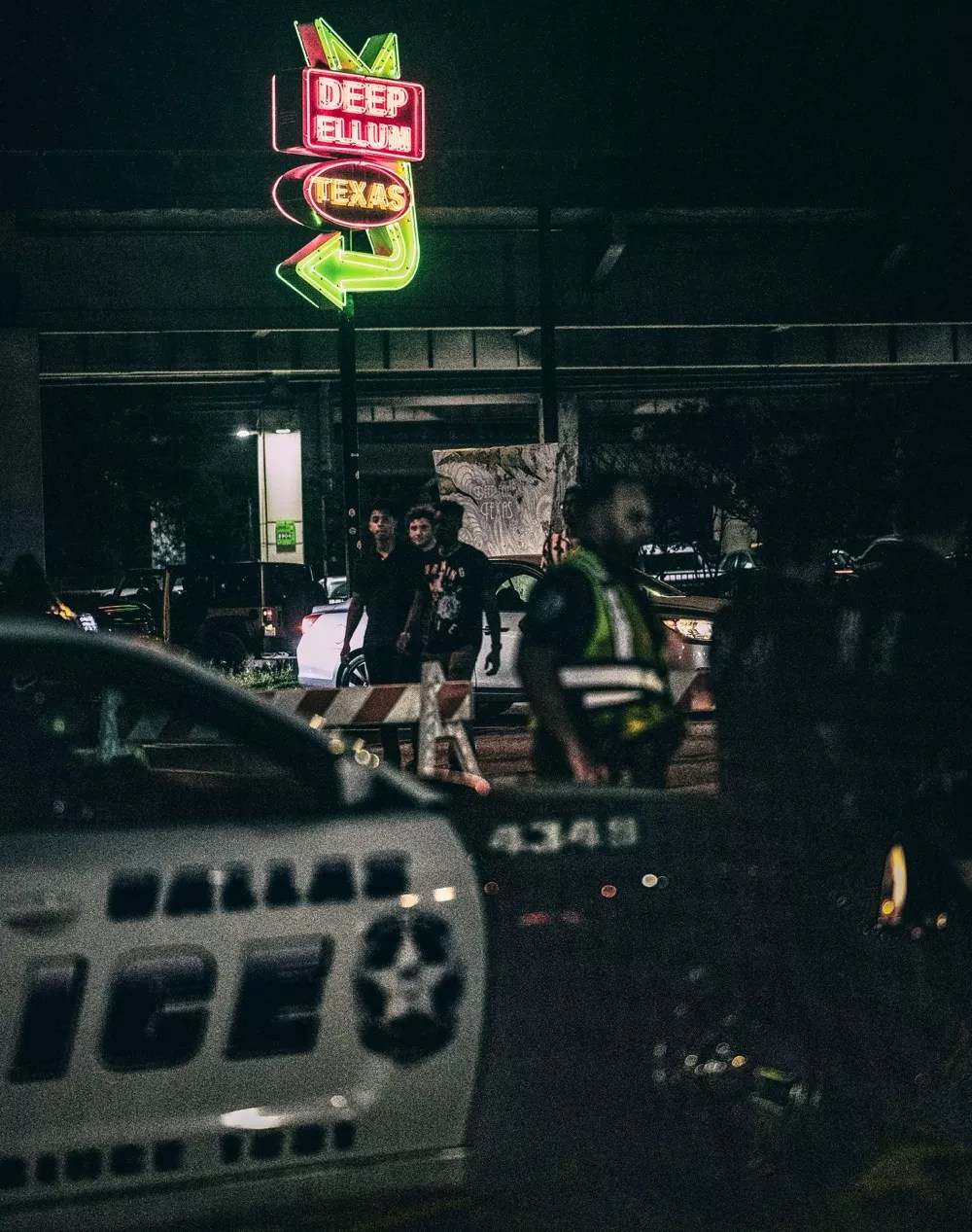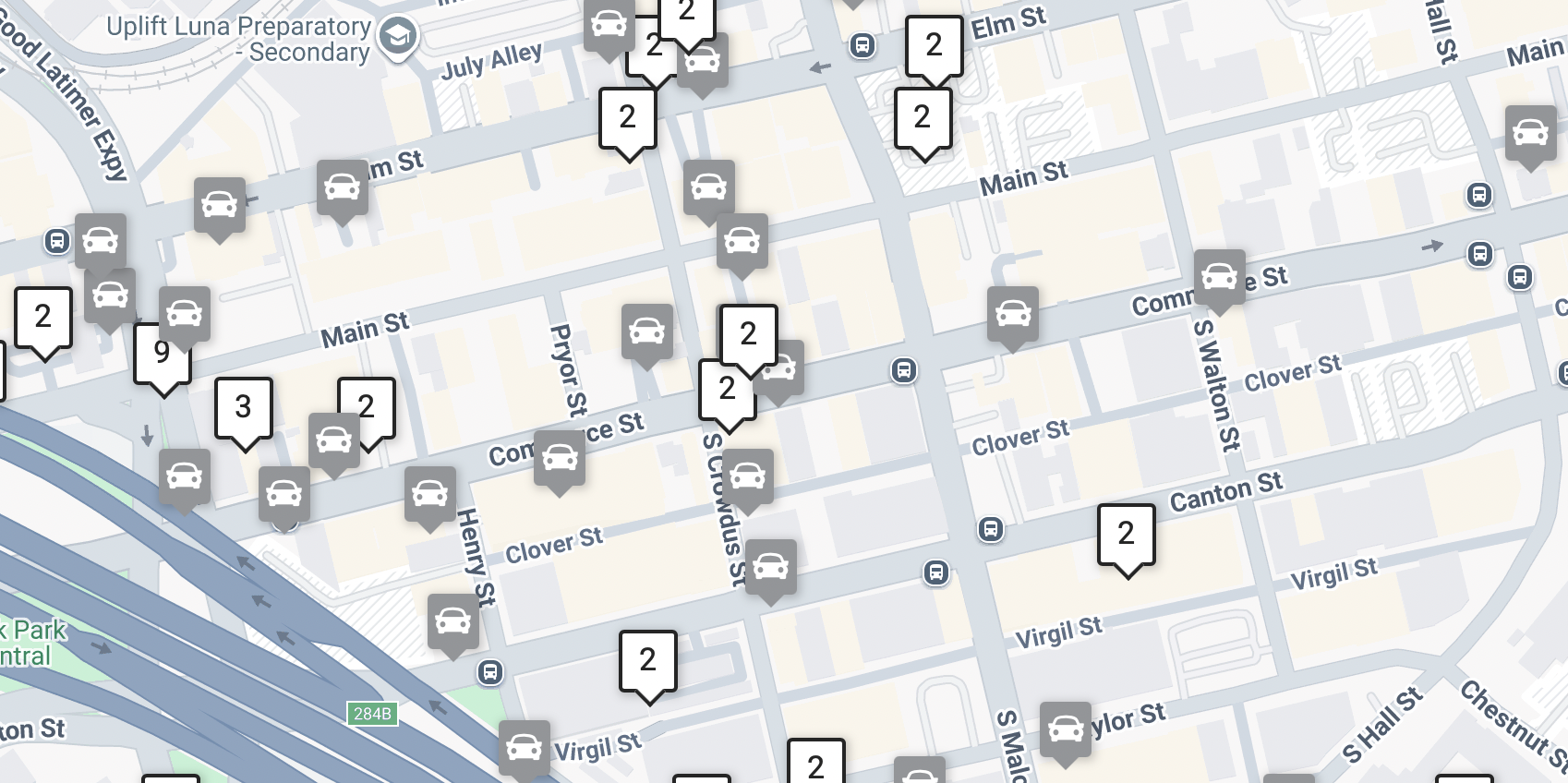
Mike Brooks

Audio By Carbonatix
Less than a month ago, Deep Ellum business owners sounded the alarm that unruly revelers had turned Dallas’ premier entertainment district into “a war zone.”
A string of incidents over the July 4 holiday weekend – including the fatal shooting of 21-year-old Jonathan Santos, who was killed while attempting to break up a fight outside of the club Rodeo Dallas, which has since been temporarily shut down – had left community leaders saying “enough is enough.” City officials pledged to do better.
On Tuesday evening, Dallas’ Community Police Oversight Board returned from a month-long summer hiatus, and the first item on its agenda was a briefing “on the crime statistics from January to June 2025 in Deep Ellum.” The briefing would allow Dallas police officials to “answer general questions about public safety in the area,” the agenda said. A bullet point beneath the agenda item suggested that arrest data would help facilitate a “discussion” among the board, which is tasked with enhancing the public’s trust in the police department by promoting transparency in policing.
The presentation and subsequent discussion lasted 13 minutes, and it left more questions than answers.
When news happens, Dallas Observer is there —
Your support strengthens our coverage.
We’re aiming to raise $30,000 by December 31, so we can continue covering what matters most to you. If the Dallas Observer matters to you, please take action and contribute today, so when news happens, our reporters can be there.
The two-page report that was presented to the board starts fairly straightforward. Between Jan. 1 and June 30 of this year, the Dallas Police Department has made 424 arrests on the streets of Deep Ellum, and nearly 40% of those arrested have been Black men, a fact that Johnathan Maples, the board representative for District 2, described as a “glaring thing.”
“As a Black man in this city, I’ll just be open and honest, I’ve got to do a better job of meeting these young people where they are because I don’t sit on this board just to watch the good and bad of the Dallas Police Department,” Maples said.
From this point on, things are confusing.
Incomplete Data
The arrest data included in the report comprises numbers from the FBI’s National Incident-Based Reporting System (NIBRS). The NIBRS classifies crimes into three categories: crimes against property, crimes against persons and crimes against society. If you don’t know what any of that means, that’s OK. We’ll come back to it in a bit.
The presentation compared changes in each category between July and June this year, between this June and last, and year-to-date between 2024 and 2025. Green numbers, said Siara Obasuyi, a policy analyst with the Office of Community Police Oversight who gave the presentation, represent a decrease. Red numbers represent an increase.

Five homicides have been recorded in Deep Ellum so far this year. None of them are on the report shared with the oversight board Tuesday.
Mike Brooks
This is a strange way to present data, if for no other reason, because a 96.59% increase in “crimes against society” year-to-date isn’t super tangible in a category so broad. Crimes against property, which is a little more straightforward in name, have gone down 15.79% year-to-date, the report said. In a briefing on crime statistics, everyone wants to hear that the numbers are ticking down, right?
If you go purely based on that analysis, you’d be left wondering what the business owners of Deep Ellum are complaining about. After all, 10 stats in the report are coded green, eight are red, and everyone knows that green is good and red is bad.
But the numbers presented in the report don’t make sense when compared with the stories shared by business owners desperate to rein in what has become a few city blocks of the Wild West.
That’s when we discovered that Tuesday’s report is just arrest data, not a holistic look at how many crimes have actually been committed. So that 15.79% drop in crimes against property isn’t a drop in crimes committed, it’s a drop in arrests for those crimes. It’s a weird way to measure the state of Deep Ellum when police themselves have admitted that making arrests in the district is difficult because it requires them to leave the area to transport someone to jail.
As business owners have urged city leaders to understand, just because the arrests aren’t happening, it doesn’t mean the crimes have stopped.
One anonymous bar owner recently told the Observer‘s food editor that Dallas’ cops typically take on a more supervisory role on the district’s outer perimeter, leaving whatever happens in the heart of Deep Ellum to fly unchecked. Multiple business owners say it’s common to see young adults and teenagers freely walking around at night with open containers, which is illegal but largely unenforced.
None of that is reflected in the data shared with the oversight board Tuesday evening.
Any Dallasite who tuned into the meeting hoping to learn, as promised on the agenda, about the crime statistics of Deep Ellum, at best, wasted their time. At worst, they were misled by a report with no context.
Understanding the State of Deep Ellum
The day following the board’s briefing, District 1 board member Ozzie Smith told the Observer that he was still parsing through the data presented. The briefing was a “cursory” look at a report that board members will likely dive deeper into in next month’s meeting, he said, once the representatives have had time to process the pages of information that were given to them just moments before Tuesday’s meeting began.
Already, board members have requested that data showing the age ranges of those arrested in Deep Ellum be available at the September meeting.
“There were flags that there had been a lot of arrests and issues with the nightlife,” Smith said. “I had seen the back and forth on the news. … This was our way to look at, from our purview, what was going on [in Deep Ellum].”

While the report states that only one arrest has been made for motor vehicle theft this year, DPD data shows that the crime has occurred dozens of times.
Screenshot of DPD Crime Map.
Smith said he didn’t know whether the board had specifically requested a report showing just arrests or arrests next to crimes reported, but that both data sets would be appropriate for the board’s consideration. We asked Obasuyi, the policy analyst who analyzed the data provided by DPD and presented the report, whether a broader look at overall crime would have made sense for the briefing.
“That’s DPD’s data, so I’d be inclined to reach out to DPD. I was just presenting the data,” she said.
“Our understanding is the report only goes over actual arrests made, it’s not a holistic look at the number of crimes that have been committed [in Deep Ellum],” we said.
“Unfortunately, I can’t answer those questions,” she said. “It’s not our data.”
So we went to the Dallas Police Department, which said, admittedly, the NIBRS arrest report is a “really weird” way to attempt to understand what’s happening in the entertainment district. For example, the report classifies murder under the crimes against persons category, but it doesn’t actually track how many homicides have occurred; instead, it presents the number of people who were arrested in Deep Ellum on an existing murder warrant, which, between Jan. 1 and June 30, happened zero times.
But the Dallas Police Department’s crime dashboard shows that in that period, there have been five homicides recorded in Deep Ellum, and four have occurred just since June.
“When you’re talking about stuff happening in Deep Ellum, typically, I think you’ll [want to look at] reported offenses, not arrests. Because a murder offense that happens in Deep Ellum might get arrested at Love Field, and then that arrest is going to be counted at Love Field as a warranted Dallas PD murder line item, even though [the crime] happened [in Deep Ellum],” Corbin Rubinson, a spokesperson for the department, told the Observer.
“Did the [Office of Community Police Oversight] specifically ask for arrest data?” we asked. “We’re trying to figure out what was requested and what was provided.”
“That would probably need to be a question you ask of them,” Rubinson responded.
Don’t worry. We groaned, too.
What the Stats Show
Here’s what we do know, based on Tuesday’s report and crime data available on the Dallas Police Department’s website.
For crimes against society, which include issues like narcotics arrests, public intoxication, gambling and driving under the influence, arrests are up.
Public intoxication arrests have increased 185.7% year-to-date, and disorderly conduct arrests have gone up 42.11%. Arrests for driving under the influence have doubled since 2024, and arrests for assaults have increased 12.5%.
But that doesn’t mean that things are anywhere near under control.
I’m glad Deep Ellum is closing early.
— Lauren Paige (@817Lauren) August 1, 2025
The area hasn’t felt the same for me since I was around the corner from a boy who got shot in the head and died a few years ago.
Take the report’s look at assault arrests, for instance. So far this year, Dallas police have made five arrests for aggravated assault, which is an increase from the two arrests made in the first six months of last year. Those aggravated assaults would include instances of gun violence, said Rubinson, but that data drastically undersells what has been recorded. DPD’s interactive dashboard shows that 22 reports of aggravated assault with a deadly weapon have been made in Deep Ellum since Jan. 1, and 22 more reports of weapons violations have been made. Of those calls, 15 arrests have been made, a 15.38% uptick from the 13 last year.
Only one arrest has been made for motor vehicle theft, which is marked in the report with a green -50% because two arrests were made last year. But DPD’s dashboard shows dozens of car burglary reports have been made since Jan. 1. While 27 disorderly conduct arrests have been made this year, eight more than were made in 2024, DPD data suggests those arrests are just the tip of a very party-hardy iceberg.
The city has promised Deep Ellum’s community leaders that it will have a plan to improve public safety ready to be implemented by mid-September.
Let’s hope that, while making that plan, they use data that actually makes sense.